
7 minute read
Autumn in the pond
The garden pond evolves like a garden itself. It changes as the years go by, but it is also subject to seasonal changes. These natural changes resulting from the seasonality of our climate determine the procedures that need to be carried out in the pond to ensure its proper functioning.
CLEANING IS ESSENTIAL Regardless of the season of the year, the appearance and functioning of the pond are determined by the maintenance procedures carried out inside and around it. Keeping the pond clean has an impact on the formation and maintenance of biological balance. The pond, as a closed (generally) artificial ecosystem, is exposed to the accumulation of organic matter, which leads to deterioration of water quality and smell and reducing its transparency. The growing conditions of plants are worsening – cloudy water is poorly permeable to sunlight, which is essential for photosynthesis. Decomposing organic matter absorbs oxygen, which in extreme cases can cause the fish to go into hypothermia due to suffocation. Any negligence in pond maintenance is particularly dangerous during winter, so autumn is a period of intensive cleaning work just to be prepared. PREPARING FOR WINTER Preparations for winter will differ between shallow (up to 1 m) ponds and deeper ones. With shallow ponds, especially when their bottom is made of plastic moulds, the best solution is to pump out water and hide all the technical equipment. Both fish and plants will be then overwintered indoors. In turn, owners of deep ponds (above one meter) must take action to allow fish and plants to overwinter in the pond. The first works can start already in September.
Advertisement
REMOVAL OF ORGANIC MATTER FROM THE POND If shrubs and deciduous trees grow in the vicinity of the pond, you have to be ready to remove the leaves that fall into the water. If there is a large number of these, it is worth considering installing a fine-meshed net just above the water surface. When the leaves fall, you can eas-

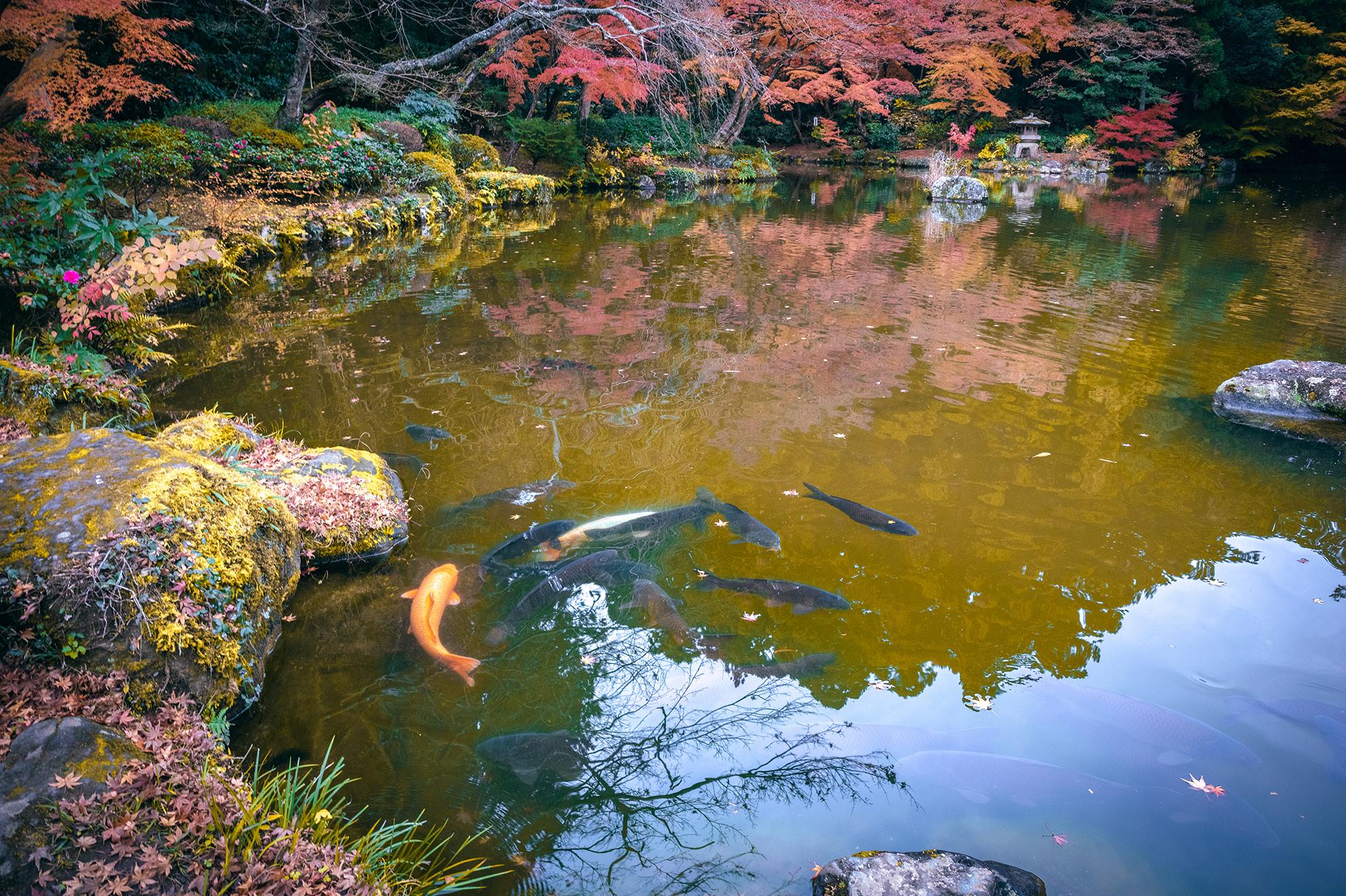
Strong, well-nourished fish will have a better chance to survive winter in the pond
ily remove the net. If this is not an option, you must regularly remove the leaves by hand or with a vacuum cleaner. Or use a skimmer that catches floating debris on the surface. Cleaning the pond of remaining organic matter is particularly important when fish are to overwinter in it. The organic matter accumulated in the pond even at low winter temperatures will be slowly decomposed by bacteria and fungi. These processes absorb oxygen. In deeper layers of sediment, anaerobic decomposition will can take place and hydrogen sulphide can be released into water. As a result, spring can greet you with an unpleasant view of dead fish that have suffocated during winter. Of course it is not possible to remove all organic matter from the pond unless we plan to start a new home. So preparing for winter is about securing the pond so that it will wake up to life together with a new season. We will not remove all organic matter, but we can support the functioning of the pond by using selected strains of bacteria such as Bactinin Pond. These live bacteria cultures support the decomposition of organic residues, preventing them from accumulating in the pond. Using them regularly throughout the season will significantly improve pond’s functioning.
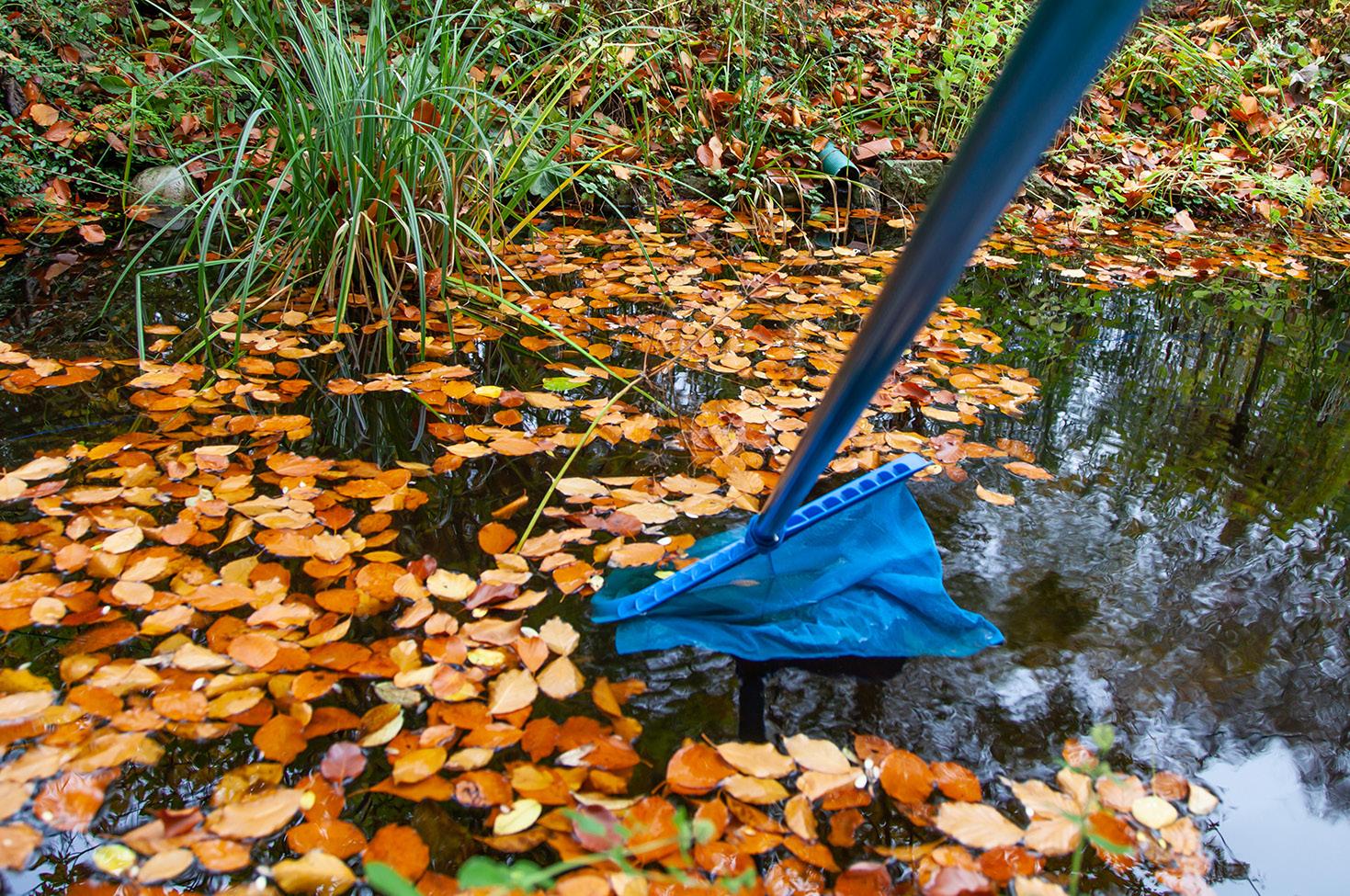
If leaves enter the pond, they must be removed as soon as possible
AQUATIC PLANTS Shorter autumn days and lower temperatures affect life processes of aquatic plants. Some of them will die at the first frost. This applies to plants from tropical climates, such as water hyacinth (Eichornia crassipes) or spongeplant (Limnobium spongia). Indigenous species can overwinter in the form of rhizomes, e.g. pondweed (Potamogeton spp.), typha (Typha spp.), common reed (Phragmites communis), as seeds, e.g. pondweed (Potamogeton spp.), as winter buds, e.g. pondweed (Potamogeton spp.), hornwort (Ceratophyllum demersum), and under favourable conditions also as green shoots. Death of aquatic plants causes a large dose of organic matter to enter the pond. Therefore, plants from tropical climate zones – especially floating plants such as spongeplant or water hyacinth mentioned above – should be removed from the pond when the first signs of freezing due to a decrease in temperature are noticed. If you have the right conditions, you can try to overwinter some of the plants. This can easily be done with a spongeplant, provided you have a heated and illuminated aquarium. However, due to the relatively low price and rapid growth you can also buy several new specimens each year.
PREPARING FISH FOR WINTER At water temperatures below 10°C, fish stop feeding and gradually enter the state of hibernation. But before this happens, it is good to feed them well so that they can store enough supplies to survive the
winter. Koi Wheat Germ & Garlic Pellet – a food with garlic and wheat germs – is an excellent choice for the autumn. If provided regularly, it improves fish’s immunity and facilitates digestion. As the water temperature drops, the feeding frequency and the feed rate should be reduced. The food administered should be eaten quickly and completely.
WINTERING FISH IN THE POND In ponds deeper than one meter you can overwinter your fish. After cleaning, fill the pond with water to the maximum level. The aim is to ensure as deep pond as possible make it easier for the fish to overwinter. If tap water is used to replenish the pond water, it is advisable to use a chlorine neutralizing agent. Before winter, also remove any electrical equipment in the water so that it is not damaged by frost. The exception is aeration stone, which will provide aeration of water. It is worth noting that the stone should be submerged to a maximum of 1/4 of the depth of the pond, as a deeper submergence would cause warmer water from the bottom of the pond to mix with colder water from its surface. This warmer water layer at the bottom of the pond is very important for the survival of the fish. In order to avoid the need to chop out the holes in winter and risking to wake up the fish from lethargy, it is recommended to place a float with a heater in the water to prevent the surface of the pond from complete freezing and ensure gas exchange. If necessary, special water-oxygenating tablets can be given through the hole in winter. Another way to oxygenate the water in the pond during winter is to leave the shoots
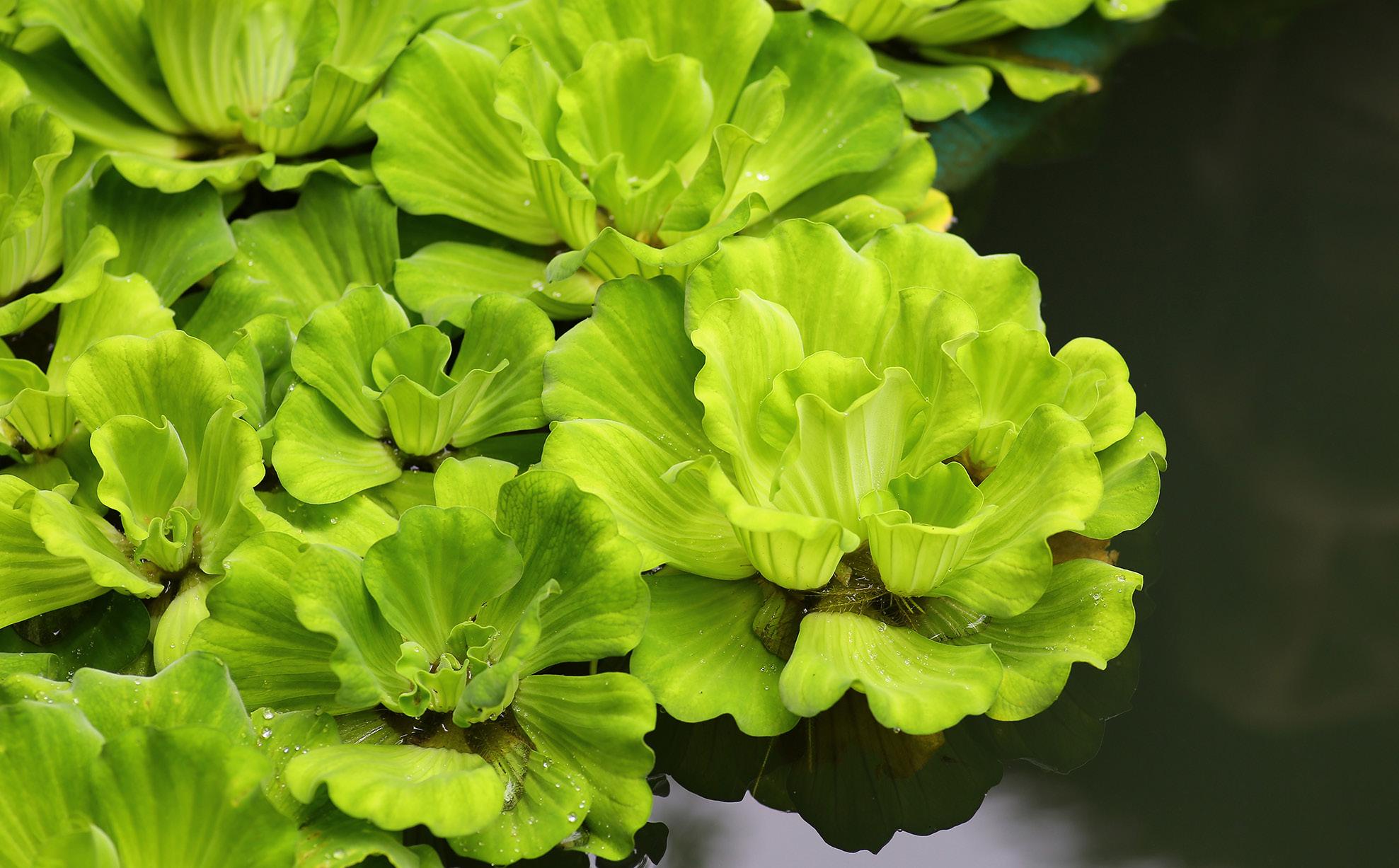
Pistia stratiotes is a floating plant from tropical climate (just like water hyacinth and spongeplant) and it should be removed from the pond before winter
of plants such as the typha or the reed in the shore area. If we do not have them, the solution is to place a clump of straw in the pond, which will also provide a gas exchange if the pond surface freezes.
WINTERING THE FISH OUTSIDE THE POND In the case of small, shallow tanks, overwintering fish must be carried out in a closed room. For this purpose, a suitably large container should be prepared, equipped with a filter. You need to fill the container with water partly obtained from the pond and mixed with tap water, properly treated with agents such as Antychlor Pond, which neutralizes chlorine, and Esklarin Pond, which will make the water safe for fish. Throughout the entire winter, it is worthwhile to regularly use a product with bacteria, which will help to maintain stable water parameters. When the temperature is high in the room where the fish are overwintered, they should be fed. Due to the small volume of water, it is important that the food is of high quality and is fed in small quantities. Any excess food floating for more than 30 minutes should be removed mechanically. * Work done in autumn will be rewarded with a beautiful spring pond. It will then not require much work. Healthy fish will be happy to try to spawn, and this will bring us many interesting observations for the next months.
Daily improvement of immunity and easier digestion
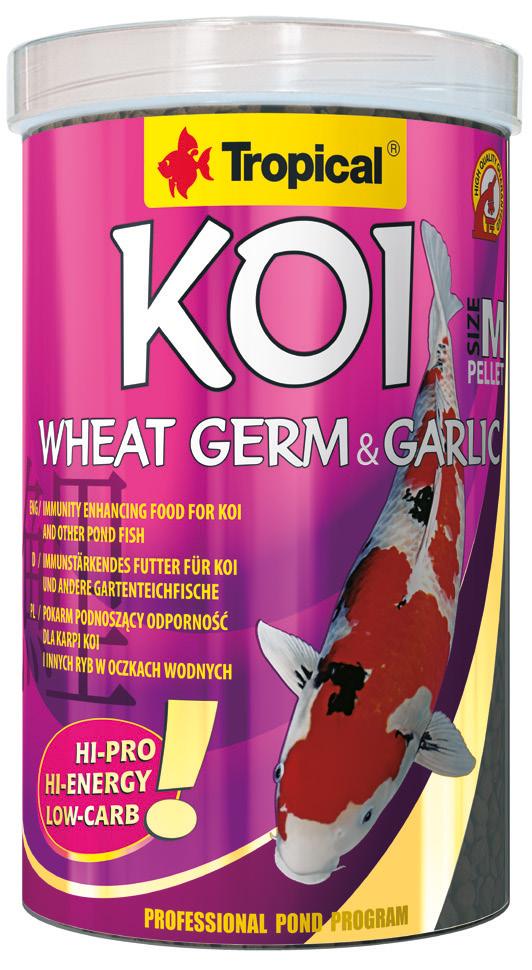
KOI WHEAT GERM & GARLIC PELLET is a food for cyprinids with the special attention to valuable koi living in garden ponds. Thanks to its unique composition with added garlic and wheat germ, it enhances fish’s condition and improves their immunity.
HERRING • CALANUS • KRILL • INSECTS • ALGAE
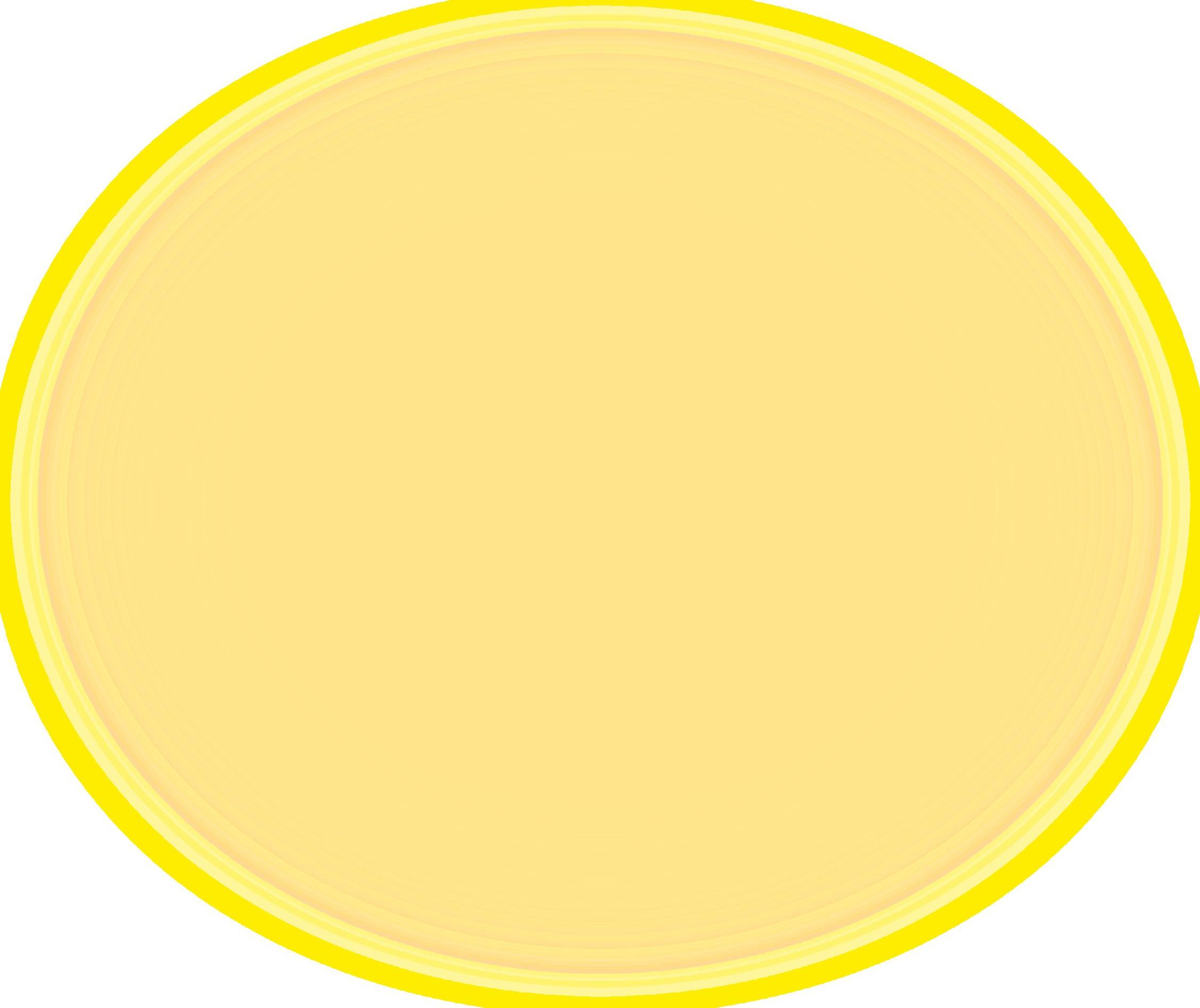

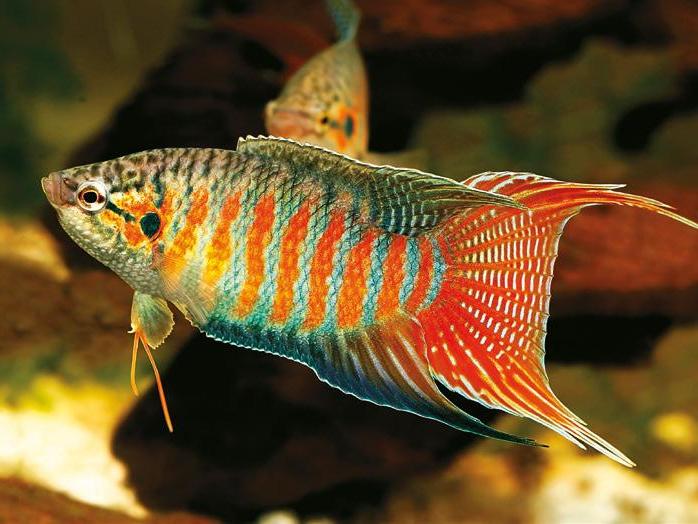

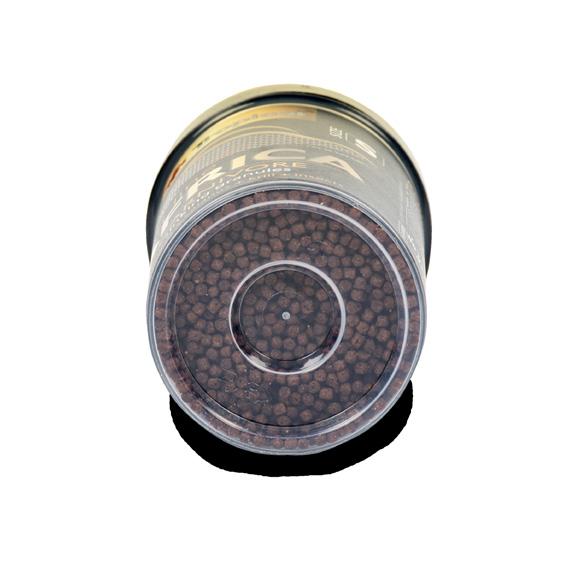
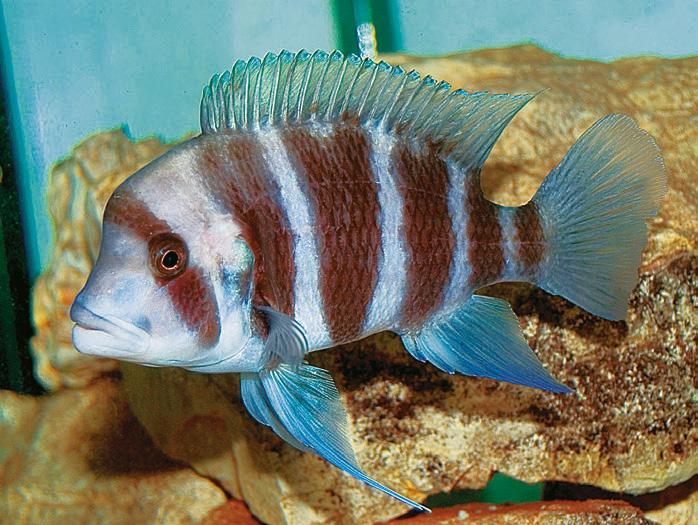
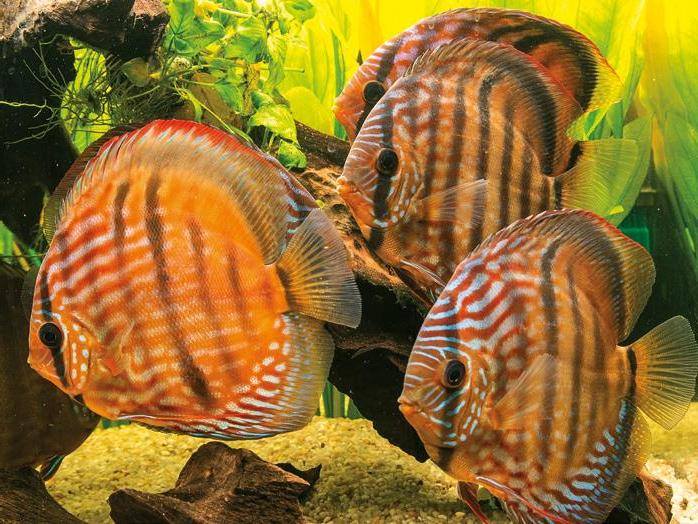
Innovative soft granules concept
The Soft Line includes granulated foods of a unique soft texture. They ensure excellent condition, intensive growth and coloration in fish.
exceptional palatability rich formulas unique ingredients improved immunity of fish



